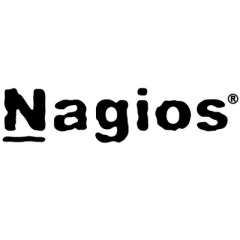
Nagios Core Primary Use Case
HY
Husham Yaqoob
Senior System Administrator at a tech services company with 10,001+ employees
I was a senior system administrator. I've been using Nagios Core for more than ten years now. It can be used to monitor hosts, such as machines, and monitor services of any kind.
I'm using it to monitor my databases. I'm using the Netgear Core to monitor my web URLs and web servers. I'm using it to monitor my application servers. I'm using it for everything. As I told you, it's a very simple and very effective monitoring solution.
View full review »I use Nagios Core for monitoring purposes only. I have added enough extensions to the Nagios Core, and the company does not want to add any new features because whatever I have added is completely worth it. I have created Nagios Core projects to improve its functionality, and we use it to monitor more than 2,500 services, servers, virtual machines, and network devices in a 24/7 environment. We also use it for email alerts and SMS alerts.
View full review »We primarily use it to offer system-style monitoring for internal customers. We usually use a tactical solution to solve problems in the monitoring space for devices and hardware or for things that need monitoring.
View full review »Buyer's Guide
Nagios Core
December 2025
Learn what your peers think about Nagios Core. Get advice and tips from experienced pros sharing their opinions. Updated: December 2025.
879,259 professionals have used our research since 2012.
UB
UweBergemann
Administrator at a non-profit with 1-10 employees
I use the solution to monitor the network and some servers.
Our company is sales based and we offer a test service to our enterprise-level customers. We use the solution to monitor our test servers and have 25 users throughout our company.
View full review »We use Nagios for network monitoring of our devices. All devices are listed on Nagios, which alerts us if they are running properly or if there is a shutdown or any issues like a network break. Alerts are generated, and we receive notifications via email or SMS.
View full review »GD
Gary Dunbar
Regional Portfolio Manager at a logistics company with 11-50 employees
My main use cases include monitoring of servers and services. Some of them are outside our network and some are inside the network.
View full review »NV
Nishith Vyas
Sr. System Administrator at a tech services company with 201-500 employees
The main objective to use Nagios Core 4.x is to save significant costs on Infrastructure Monitoring without compromising the monitoring parameters.
So, deploying Nagios Core 4.x was the only option for me considering the below-listed positive factors.
1) Working on Nagios Core for more than 10+ Years.
2) Good Hands On skills to cover the standard monitoring parameters such as CPU, Memory, Storage & Running Services.
3) By introducing NCPA Agent, further monitoring became very smooth & saves time as NRPE & NCPA Client Side Configuration takes more time. On the other hand, NCPA Installation is very straight & you just need to provide a unique token only.
4) NCPA Agent is available for Windows & Linux like OS environments with most of the current & previous stable kernels.
5) Presently, more than 500+ nodes & 2500+ services are under active monitoring.
The monitored services are as follows.
1) Windows & Linux Nodes
* CPU Utilization (%) & Allotted CPU Cores.
* Memory Utilization (%) & Allotted Memory (MB/GB/TB)
* Total Storage Utilization, Allotted Storage Space & Available Storage Space (MB/GB/TB)
* Running Services, CPU & Memory Utilization (%) by a particular service.
* Start the monitoring service if Nagios finds it SHUT.
2) Cisco Nodes (Switches, WLCs, APs, Routers)
* CPU & Memory Utilization.
* Bandwidth Utilization (Combined & on individual interface as well).
* Cisco WLC: No. of connected APs, CPU & Memory Utilization & Bandwidth Monitoring.
* PING RTA, Jitter & Packet Loss.
* Temperature, Free Interfaces, IOS Version, Switch Stack Status.
3) Services
* DNS/Domain Name Expiry
* SSL Expiry
* Many More...
View full review »CA
Constant Assoukpe
Administrateur reseaux at a comms service provider with 51-200 employees
I use this solution to monitor my network. There are 25 agents in my country. This solution sends me notifications if any equipment is down.
It's deployed on-premises. I'm currently using version 4.3.3.
There are five people in my company who use this solution.
View full review »Our main goal with Nagios is to keep a close eye on our servers and the services running in our AWS environment. We’ve got a mix of Windows and Linux systems, each running specific services, and Nagios alerts us whenever something isn’t quite right. It’s also great for monitoring the sites we host on IIS. We've relied on Nagios since 2013, and it’s been a real game-changer when you have so many moving parts to track.
View full review »Our primary use case for this solution is an APM for application performance monitoring. For example, we deployed the solution on-premises so we could observe the solution. We look at the threats at the web containers, the data source, and all these components under this monitoring.
View full review »We use Nagios to monitor networking infrastructure and services.
MJ
Mangesh Jadhav
Senior Software Engineer at a computer software company with 10,001+ employees
We use Nagios for one of our customers to monitor all the servers, firewalls, routers, and cameras. While monitoring the server we get alerts, this enables us to raise a ticket and notify end users that we are aware of the issue before they need to notify us.
We have 80 people using the dashboard and getting the alerts. Depending on the number of servers, routers, and firewalls we are monitoring in current clusters. When one cluster goes down, it will automatically take data from another cluster.
We support 24/7 because our client is a financial company, if the critical servers go down, they would face financial issues.
View full review »I use Nagios Core for basic monitoring of my systems and services.
View full review »Our primary use case is for Infrastructure monitoring.
View full review »We are using Nagios Core mainly for servers. We check the network hardware connectivity. We check for the availability of the network and for hardware failures.
We have deployed Nagios Core on a VM and it's working very well. The specs of the VM are very low because it doesn't require so much storage
View full review »It is used for monitoring services on a bunch of virtual machines.
In terms of the version, we're fairly up to date. We are perhaps not the most up-to-date, but we're fairly current.
View full review »I'm primarily using Nagios Core to monitor infrastructure like servers, virtual machines, and telephone usage like IP-DECT antennas. I don't use all of Nagios Core's data functionality. I only use the monitoring features.
SS
Susantha Kumar
Support on banking at a computer software company with 201-500 employees
We use the product to monitor server applications.
View full review »AD
Aymen Dridi
Systems and Virtualization Engineer at a tech services company with 201-500 employees
We use Nagios Core to detect any issues in our infrastructure, software, system service, and network issues. It is a centralized monitoring service.
View full review »We primarily use the solution for monitoring ops for computers and our server. We're considering adding other device monitoring as well and at points of sale.
View full review »MN
Manoj Nair
Tech consultant at a tech services company with 51-200 employees
The primary use for this solution is basic network monitoring of a MPLS network.
View full review »We use the solution to monitor our IT infrastructure, like servers, the network, and things like that.
View full review »We used Nagios Core to monitor our servers in other countries. Our main server is in Cairo, while we monitor other servers in Germany, which are hosting Jenkins and other web services to make sure that the infrastructure is stable and if anything goes wrong it reports it automatically.
View full review »- Monitoring the critical services and network environment for a large multi-site company.
- It is also used for troubleshooting issues and capacity planning.
We use Nagios to monitor hundreds of CentOS cloud servers (and a few Legacy Windows servers). Nagios is monitoring well over 5000 service endpoints. Some plugins were handwritten in PHP, Perl, Python, Java and Bash.
View full review »It's monitoring all of our production environment and alerting us to any issues that might pop up.
View full review »Buyer's Guide
Nagios Core
December 2025
Learn what your peers think about Nagios Core. Get advice and tips from experienced pros sharing their opinions. Updated: December 2025.
879,259 professionals have used our research since 2012.























